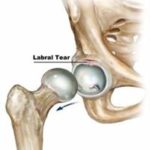Looking for Geriatric Physiotherapy at Home Near You?
Caring for elderly loved ones can feel like walking a tightrope balancing compassion, safety, and independence all at once. And if you’re looking for geriatric physiotherapy at home near you, chances are you’re already searching for the perfect middle ground. Well, you’re not alone.
With age, mobility becomes a daily challenge, but guess what? You don’t have to let your elders struggle in silence. Home-based geriatric physiotherapy isn’t just about treating aches and pains, it’s about bringing dignity and comfort right to their doorstep. Let’s unpack why this form of care is becoming a go-to solution for families across the globe.
Why Geriatric Physiotherapy at Home Is a Game-Changer
There’s something truly comforting about being cared for in your own space. That’s what geriatric physiotherapy at home offers familiarity, flexibility, and a whole lot more. But why are so many families opting for this over traditional clinic visits?
The Benefits of Physiotherapy for Elderly
Let’s break it down with some real-deal perks:
- Personalized attention – One-on-one care with full focus on the patient’s unique needs.
- Zero travel stress – No more dealing with bumpy car rides or long waits at clinics.
- Faster recovery – Healing often happens quicker when the mind feels safe and the body is relaxed.
- Stronger family support – Sessions happen right in front of you, so you’re always in the loop.
- Improved quality of life – Regular movement, less pain, and more confidence go a long way.
What Are the Principles of Geriatric Rehabilitation?
Alright, so what makes geriatric rehab different from any ol’ physiotherapy session? It’s not just about exercises it’s a whole philosophy rooted in respect, patience, and smart planning.
Core Principles That Drive Elderly Rehab
- Individualized care – Because no two aging bodies are the same.
- Holistic approach – Focusing on physical, emotional, and social wellness.
- Function before form – The goal is daily independence, not athletic perfection.
- Safety first – Every movement is designed to avoid falls or injury.
- Active participation – Encouraging seniors to engage and own their recovery.
It’s like teaching someone to fish instead of feeding them for a day this approach empowers, not just treats. Want to get more information?
What Is the 5M Approach in Geriatric Care?
If you’ve been researching elder care, chances are the 5M approach has popped up more than once. But what’s it all about?
Meet the 5Ms: The Gold Standard in Elder Care
- Mind – Maintaining mental clarity and preventing cognitive decline.
- Mobility – Encouraging safe movement to maintain independence.
- Medications – Reviewing drugs to reduce harmful side effects.
- Multicomplexity – Managing multiple health conditions together.
- Matters Most – Focusing on what truly matters to the individual.
This framework is like a GPS it guides caregivers and physiotherapists toward meaningful, patient-centered outcomes. It’s not just care; it’s thoughtful care.
Signs It’s Time to Call a Home Physiotherapist
Still unsure if home-based care is the right fit? Here are a few signs that say it’s time to make the move:
- Your loved one avoids walking or complains of frequent pain
- They’ve had recent falls or near-misses
- Post-surgery recovery needs extra support
- Memory issues make travel tough
- You’re noticing a steady decline in strength or balance
Don’t ignore these subtle clues; they’re your cue to act before things get worse.
FAQs
- Is physiotherapy at home as effective as clinic-based sessions?
Absolutely! In many cases, it’s even more effective because therapy is tailored to the person’s real-life environment. - How often should an elderly person get physiotherapy?
It depends on their condition, but typically 2–3 sessions a week is ideal to see steady progress. - What should I look for in a home physiotherapist?
Check for experience with elderly patients, certifications, a warm bedside manner, and positive reviews or referrals. - Can physiotherapy really help with age-related mobility issues?
Yes! It can improve strength, balance, coordination, and even reduce the risk of falls dramatically. - Is geriatric physiotherapy covered by insurance?
It depends on your provider, but many insurance plans and government schemes now recognize its value and offer partial or full coverage.
Conclusion: It’s Time to Bring Care Home
Let’s face it, aging isn’t easy. But it doesn’t have to be lonely, painful, or hopeless either. With the right support, elders can enjoy their golden years with strength, dignity, and grace. And if you’re still looking for geriatric physiotherapy at home near you, now’s the perfect time to take action.
Because sometimes, the best kind of care isn’t found in clinics it’s right there in the comfort of home, one gentle stretch, one encouraging word at a time.











